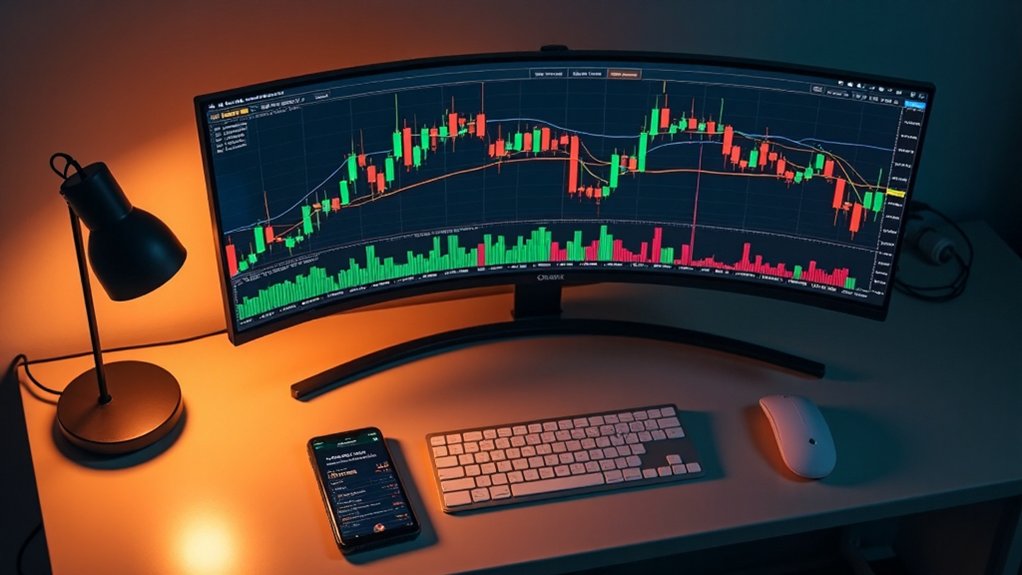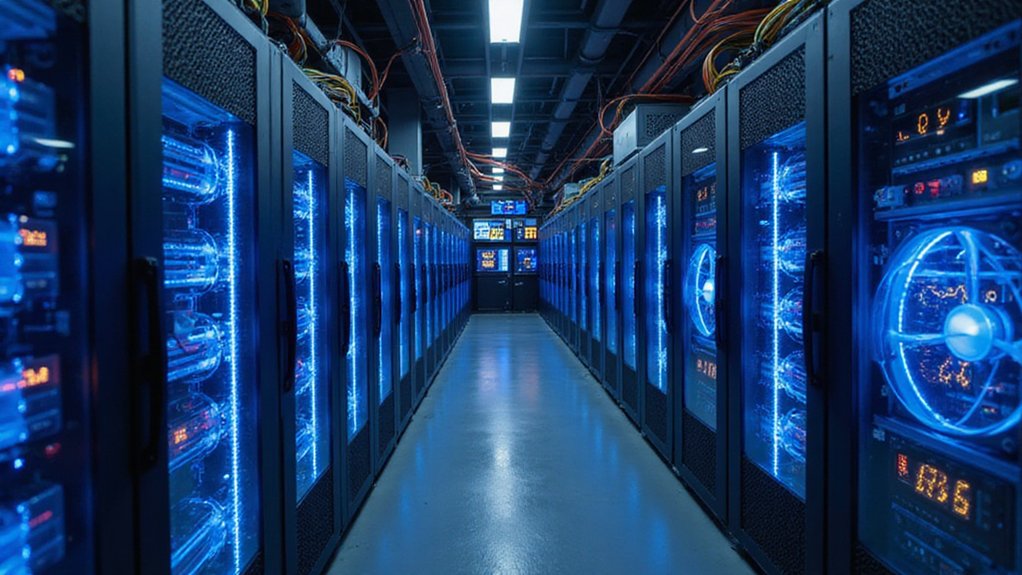Bitcoin mining transforms electricity into digital currency through computational contests where ASIC machines guess numbers to find a cryptographic hash below a target threshold. Successful miners receive newly minted bitcoins (currently 3.125 BTC) plus transaction fees. As difficulty increases, most participants join mining pools to improve reward chances. Profitability hinges on hardware efficiency, electricity costs, and Bitcoin’s market value—a delicate economic ballet where mathematics meets marketplace reality.

How exactly does one “mine” a digital currency that exists solely in the electronic ether? The process, while esoteric to the uninitiated, follows a surprisingly logical framework. Bitcoin mining serves the dual purpose of validating transactions and introducing new coins into circulation through a computational competition that would make Darwin raise an eyebrow.
At its core, mining revolves around the Proof-of-Work consensus mechanism—a system requiring miners to demonstrate tangible computational effort. Miners collect pending transactions from the mempool, compile them into a block, and then engage in what amounts to a mathematical guessing game. They must find a 64-digit hexadecimal hash value below a target threshold by manipulating a nonce value—a computational lottery where the odds are deliberately astronomical.
Bitcoin mining is computational bloodsport—a relentless marathon of machines guessing numbers for the chance at digital gold.
The hardware landscape has evolved dramatically since Bitcoin’s inception. Early miners utilized standard CPUs before graduating to GPUs, but today’s serious operations deploy Application-Specific Integrated Circuits (ASICs)—machines engineered solely for mining with hash rates and efficiency that render previous technologies obsolete. These specialized devices, manufactured by firms like Bitmain and MicroBT, represent significant capital investments ranging from three to five figures. ASICs provide superior performance and energy efficiency specifically for Bitcoin mining operations.
Successful miners receive a block reward—currently 3.125 BTC following the April 2024 halving—plus transaction fees from users seeking expedient confirmation. This reward structure operates on a deflationary schedule, with issuance halving approximately quadrennially, gradually shifting miner incentives toward transaction fees as the primary revenue source. Currently, about 900 new Bitcoins are generated daily through this mining process.
The network maintains equilibrium through automatic difficulty adjustments every 2,016 blocks, ensuring the coveted ten-minute block time despite fluctuations in total network hash power. This self-regulating mechanism preserves Bitcoin’s predictable issuance schedule regardless of mining participation. The increasing competition among miners has substantially raised operational costs, potentially causing situations where mining expenses exceed the rewards obtained.
Given the intensifying difficulty and capital requirements, most miners join pools—collective enterprises that combine computational resources to increase the probability of reward, distributed proportionally to contributed work. Mining profitability hinges on a complex interplay of hardware efficiency, electricity costs, Bitcoin’s market value, and network difficulty—a calculus that demands substantial analysis before commitment.
Frequently Asked Questions
What Environmental Impact Does Bitcoin Mining Have?
Bitcoin mining exacts a staggering environmental toll across multiple fronts: consuming electricity comparable to entire nations (with fossil fuels powering much of this voracious appetite), generating CO₂ emissions rivaling Greece, guzzling water volumes equivalent to hundreds of thousands of Olympic pools, producing e-waste on par with the Netherlands’ small IT equipment discards, and contributing to thermal pollution—all while utilizing specialized hardware with deliberately abbreviated lifespans.
An ecological catastrophe, by any rational measure.
Can I Mine Bitcoin on My Home Computer?
Mining Bitcoin on a home computer is technically possible but financially quixotic.
While early Bitcoin enthusiasts could mine profitably with standard CPUs, today’s network—dominated by warehouse-scale ASIC operations—renders consumer hardware comically ineffective.
A modern laptop might contribute 0.000001% of required hashrate, generating pennies while consuming dollars in electricity.
For the determined hobbyist, alternatives exist: mining pools, altcoins, or simply purchasing Bitcoin directly—arguably the more financially sound approach.
How Much Does It Cost to Start Mining Bitcoin?
Starting a Bitcoin mining operation requires substantial capital investment—typically $10,000-$20,000 minimum for a small-scale setup.
ASIC miners range from $170 for entry-level models to $12,000+ for premium units.
The ongoing electricity costs, however, represent the true financial commitment, with global averages suggesting approximately $46,000 in power consumption per Bitcoin mined.
Location matters enormously; savvy operators seek industrial rates below 5¢/kWh to maintain profitability amid relentless difficulty increases.
Is Bitcoin Mining Legal in All Countries?
Bitcoin mining’s legality varies dramatically worldwide.
While numerous jurisdictions—including the US, Canada, and most European nations—permit mining (albeit with varying regulatory frameworks), several countries have instituted outright bans.
China’s 2021 prohibition stands as the most notable example, though underground operations persist.
Others like Algeria, Nepal, and Bangladesh have similarly criminalized mining activities.
Between these poles exist jurisdictions with ambiguous stances or significant restrictions—Russia, India, and Kazakhstan among them.
How Much Electricity Does Bitcoin Mining Consume Worldwide?
Bitcoin’s global electricity consumption remains a matter of vigorous debate, with estimates ranging from 67 TWh to 240 TWh annually.
The Cambridge Bitcoin Electricity Consumption Index suggests a best-guess of approximately 120 TWh—roughly 0.5% of global electricity demand.
This places Bitcoin’s power appetite on par with entire nations like Argentina or the Netherlands, consuming over seven times Google’s worldwide operations (a fact that miners, predictably, prefer not to advertise).








